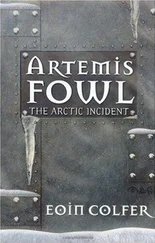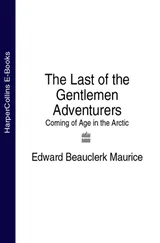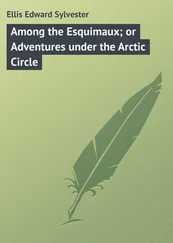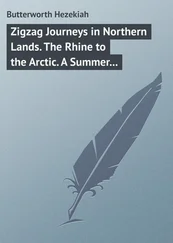Wasn’t that always the case? When you weren’t looking for it, you found it.
Wednesday Island Station
Randi Russell trudged up the trail to the knoll overlooking the station. Every few feet she stopped and heaved on the heavy, weatherproof coaxial cable that led up to the radio mast, peeling a length of it up and out of the snow cover. Carefully she ran each exposed cable section through her mittened hands, looking for breaks or cuts.
It had to be the antennas. She’d checked everything else on both the sat phone and the sideband set. The little SINCGARS transceiver they’d brought with them was useless. It simply lacked the power to override the solar flare that was demolishing communications. Once they’d broken the line of sight she hadn’t even been able to raise Jon and the others on the aircraft party.
She was on her own. As much as one could get. Impatiently she shook her head, displeased with the pang of loneliness that had flared within her. Giving the MP- 5 a hitch onto her shoulder, she doggedly plowed another few feet up the compacted snow trail.
Reaching the base of the ice-coated radio mast, Randi knelt down and traced the last few inches of cable into the booster box at the tower base. It was intact, and all the connectors were still screwed tight. Frustrated, she rocked back on her heels. The radios should be working. Given they weren’t, she was missing something. Randi suspected sabotage, but if such was the case, some very subtle methodology had been used.
Somebody was being very, very clever, and she hoped that soon she would have the opportunity to make him suffer for it.
Standing, Randi took her binoculars from her belt case. From her position on the knoll she had a fair view of the immediate cove area. Degree by degree, to the limits of the haze and the fading daylight, she made another scan of her environs, her augmented gaze lingering on the jumbled piles of pressure ice along the shoreline and on the shadows and swales of drift at the foot of the central ridge.
That clever person was out there now, somewhere nearby, possibly even watching her. He was waiting, maybe for assistance or maybe for her to make that one mistake. To defeat him she was going to have to be a little bit more clever than he was.
She had one immediate advantage. Movement in this snow-blanketed environment meant leaving obvious and unerasable tracks. The science station was centered in a straggling, lopsided web of flag-marked snow trails that interconnected the buildings, supply dumps, and more distant experiment and research sites. Randi ran her glasses down each track, seeking for fresh ground disturbances or sets of snowshoe or boot tracks angling off from the regular routes of travel.
She found one. Disconcertingly, it was almost immediately below her, branching off from the trail to the knoll she had followed just a few minutes before in her climb to the radio mast. In her intent study of the communications cable, she hadn’t paid attention to the short lateral stretch of broken snow that led out to a small disturbed drift. She did so now, and a chill rippled down her spine that had nothing to do with the sinking evening temperature.
She hastened downslope to the divergent trail and followed it for a dozen yards, kicking her way along and restirring the surface. She found what she had feared: red-stained snow, covered over and hidden. Reaching the end of the trail, she dropped to her knees and dug into the drift. It didn’t take long to uncover the parka-clad body.
Kayla Brown wouldn’t be going home to her fiancé in Indiana. Gently Randi brushed the snow from the young woman’s face. She had died from a smashing blow to the temple from some heavy, pointed object, possibly an ice axe. Traces of shock and terror, her last expression, lingered frozen on the student’s face.
Kneeling beside the girl’s body, Randi Russell decided that it would not be adequate for this clever person to suffer. He was going to die, and it would please her to be his executioner.
Randi reburied the body with a few sweeps of her arm. She would not tell Trowbridge about this discovery. Not immediately, at any rate. Kayla Brown would keep here for a time, at least until Randi could arrange for her avenging.
Randi continued to the hut row. The lights were already on within the bunkhouse. Doctor Trowbridge had volunteered to prepare an evening meal. Pausing on the main trail that led past the hut entrances, she judged vision angles and distances. Near the front of the bunkhouse, Randi veered off the trail, plowing out into the virgin snow for a few yards.
Then, dropping onto the snow, she burrowed and rolled, compacting a pit large and deep enough for her to lie in with her back almost flush with the surrounding surface. It brought back unbidden childhood memories of making snow angels up at Bear Lake. Her intents now, though, were quite different.
Satisfied with her efforts, she got to her feet, shook off the ice rime, and went in to dinner.
The Misha Crash Site
“It strikes me that a lot of people are going to feel awfully stupid if we get in there only to find that containment vessel has been lying on the bottom of the ocean for the past fifty years.” The MOPP biochemical warfare suit had been designed to fit over his cold-weather clothing, and Jon Smith suspected that he looked very much like the Michelin Tire man.
“That is a stupidity I could live with,” Smyslov replied, passing him the headset for the Leprechaun tactical radio.
“So could I.” Smith flipped back his parka hood and settled the headset in place, wincing a little as the searing chill bit at his momentarily exposed ears. “Radio check.”
“I’ve got you.” Valentina Metrace hunkered down on the ice beside him, wearing a second tactical headset. “We’re all right for line-of-sight distances at least.”
The team had set up some fifty yards upwind of the crash site, behind the meager windbreak afforded by their backpacks and a low ledge of extruded ice. Evening was standing on, but there was nothing in the way of a sunset; the grayness around them simply grew darker and the wind colder. Time and environment were becoming critical.
“Okay, people, this will be a fast in-and-out to learn if the anthrax is still aboard the aircraft, and to see if anyone else has been in there.” Smith popped the plastic safety covers off the MOPP suit’s filter mask. “You two know what I should be looking for, and you’ll walk me through it. There shouldn’t be any problems, but I’m putting one absolute in place now. If, for any reason, something goes wrong-if I don’t come out, or if we lose contact-nobody goes in after me. Is that clearly understood?”
“Jon, don’t be silly…” Valentina started to protest.
“Is that understood?” Smith barked the words.
She nodded, looking unhappy. “Yes, I understand.”
Smith looked at Smyslov. “Understood, Major?”
In the shadow of his parka hood, Smith could see some emotion roiling beneath the Russian’s stony features, an effect Smith had noticed several times before during the past week. Again Smyslov was struggling with something down in his guts where he lived.
“Colonel, I…It is understood, sir.”
Smith pulled the anticontamination hood over his head, adjusting the mask straps and sealing tabs. He took his first breath of rubber-tainted filtered air and drew on the suit’s overgauntlets.
“Okay.” His voice sounded muffled even in his own ears. “Dumb question of the day: how do I get inside?”
“The fuselage appears to be essentially intact,” Valentina’s voice crackled over the radio channel, “and the only way into the forward bomb bay is through the forward crew compartment. Unfortunately the conventional access doors are located in the nose wheel well and in the forward bomb bay itself, both of which are blocked. Your alternatives are through the port and starboard cockpit windows, which would be hard to wriggle through in that outfit, or the crew’s access tunnel to the aft compartment. The latter is your best bet.”
Читать дальше












